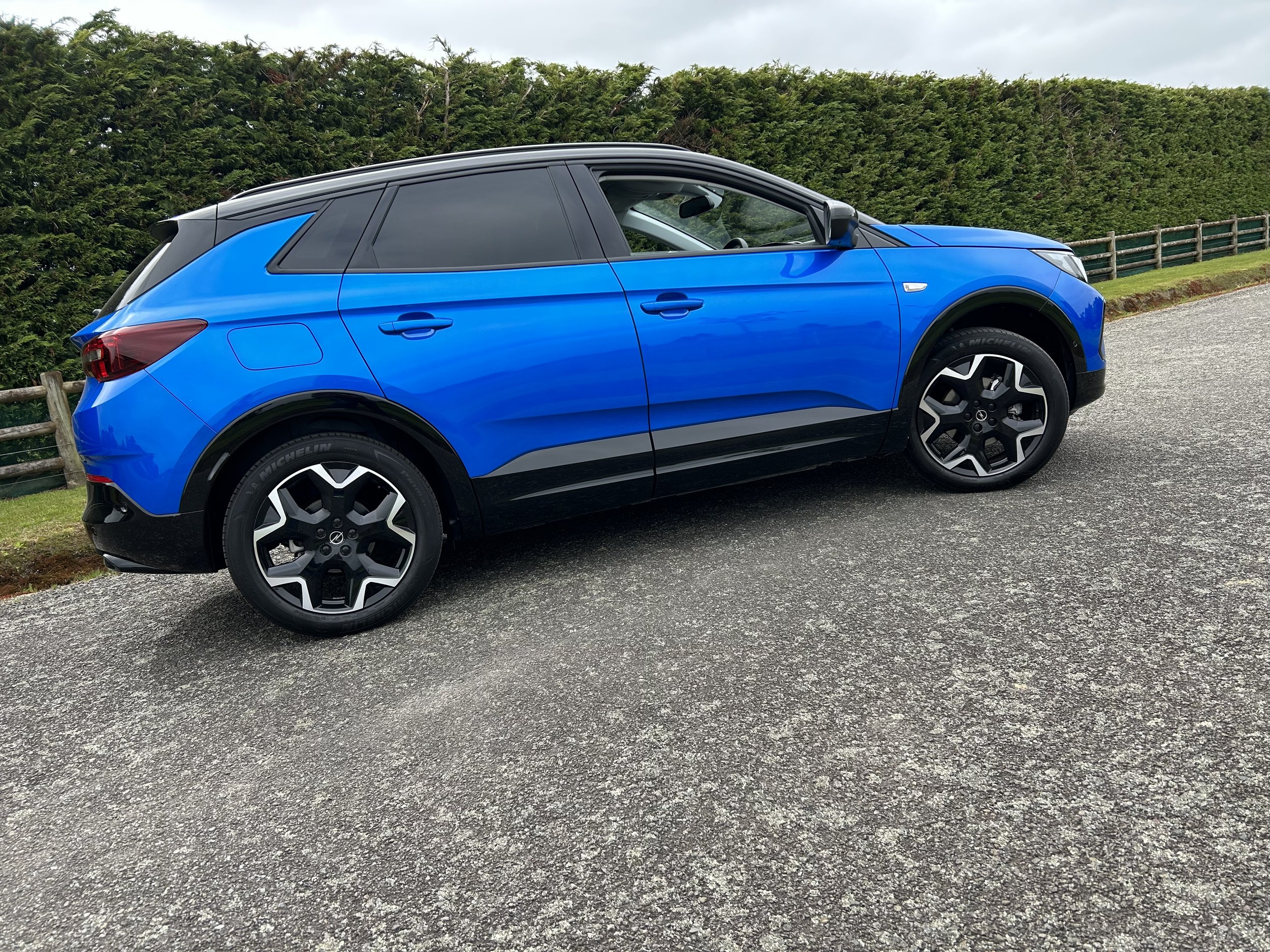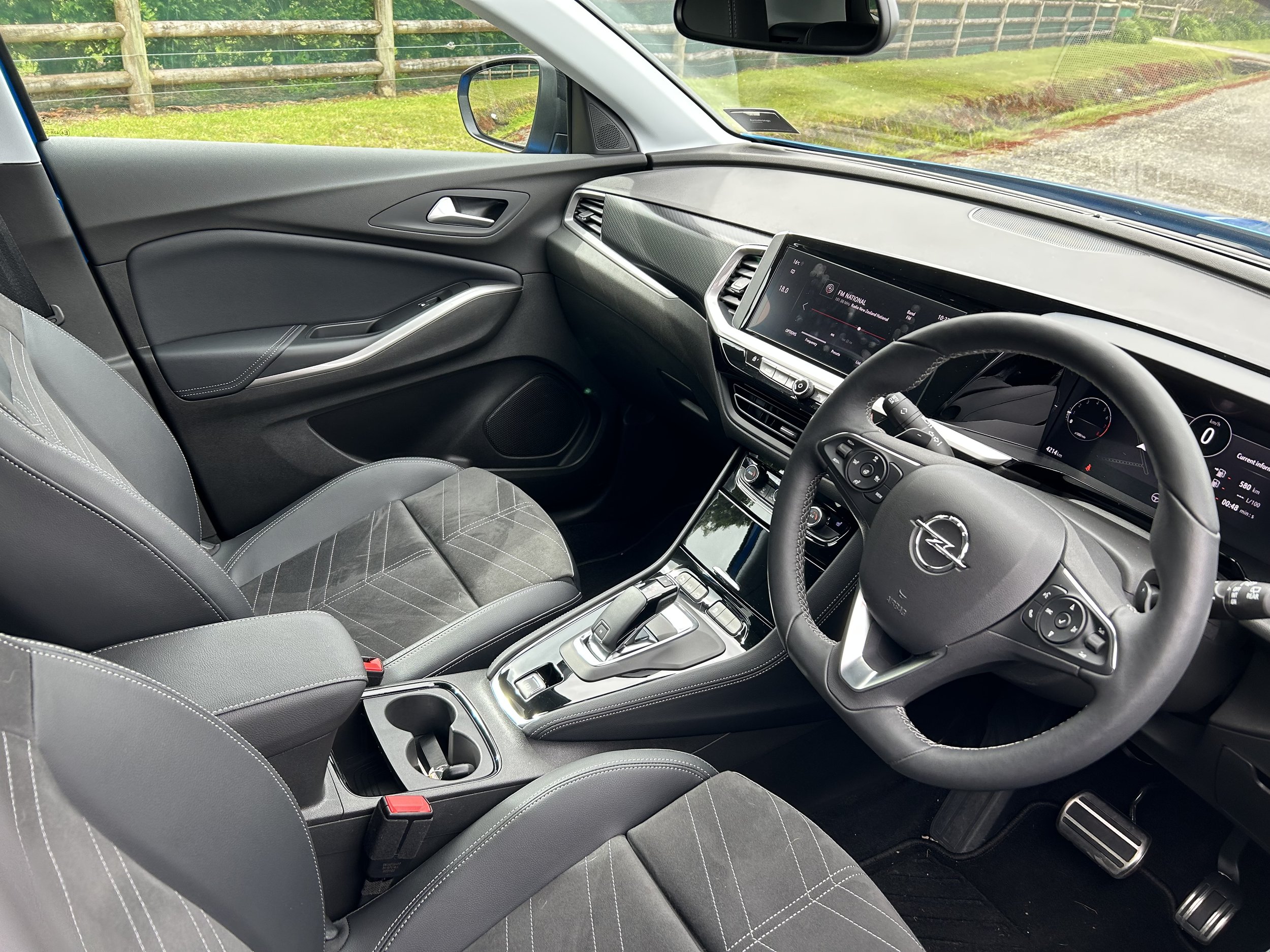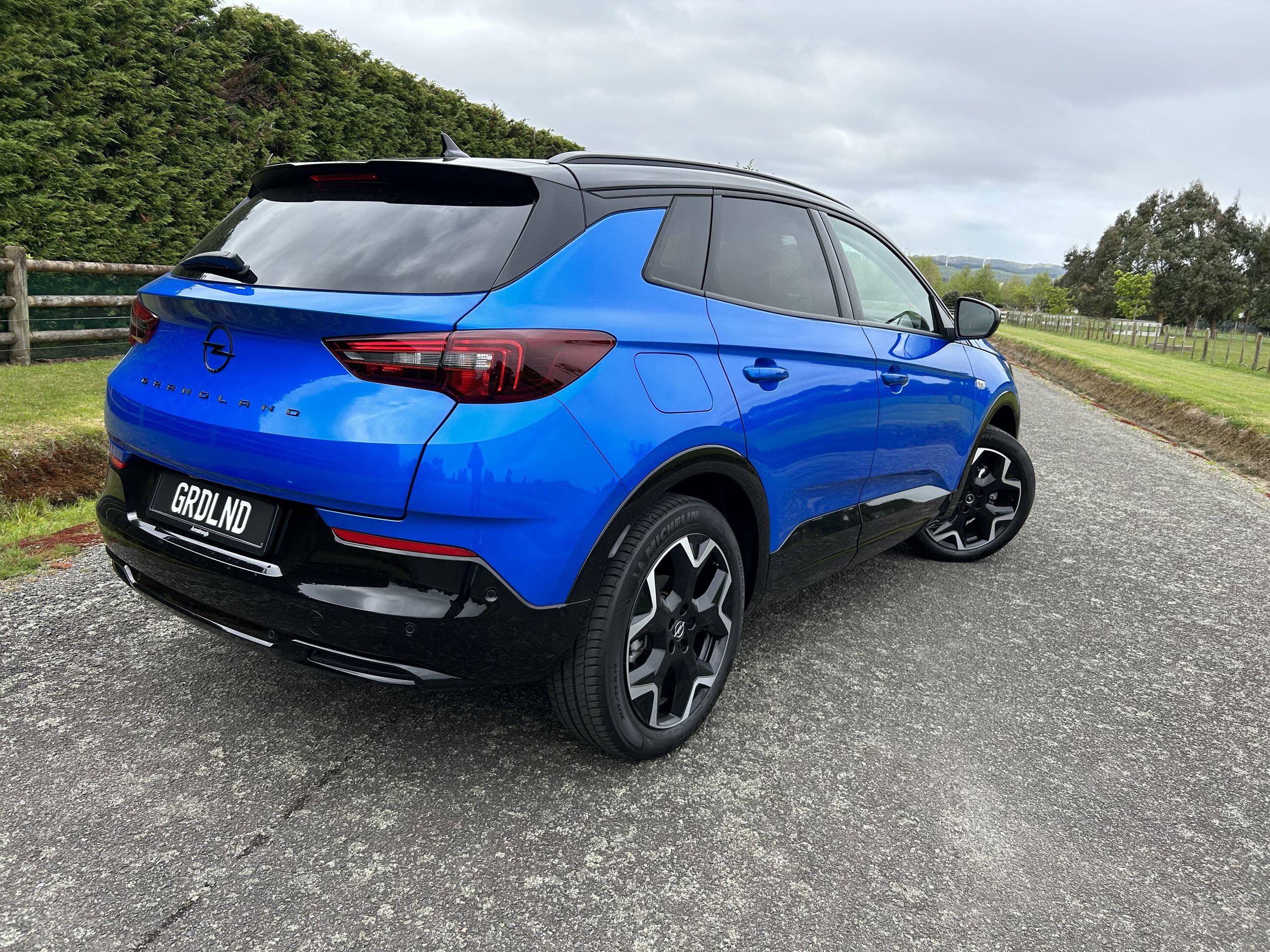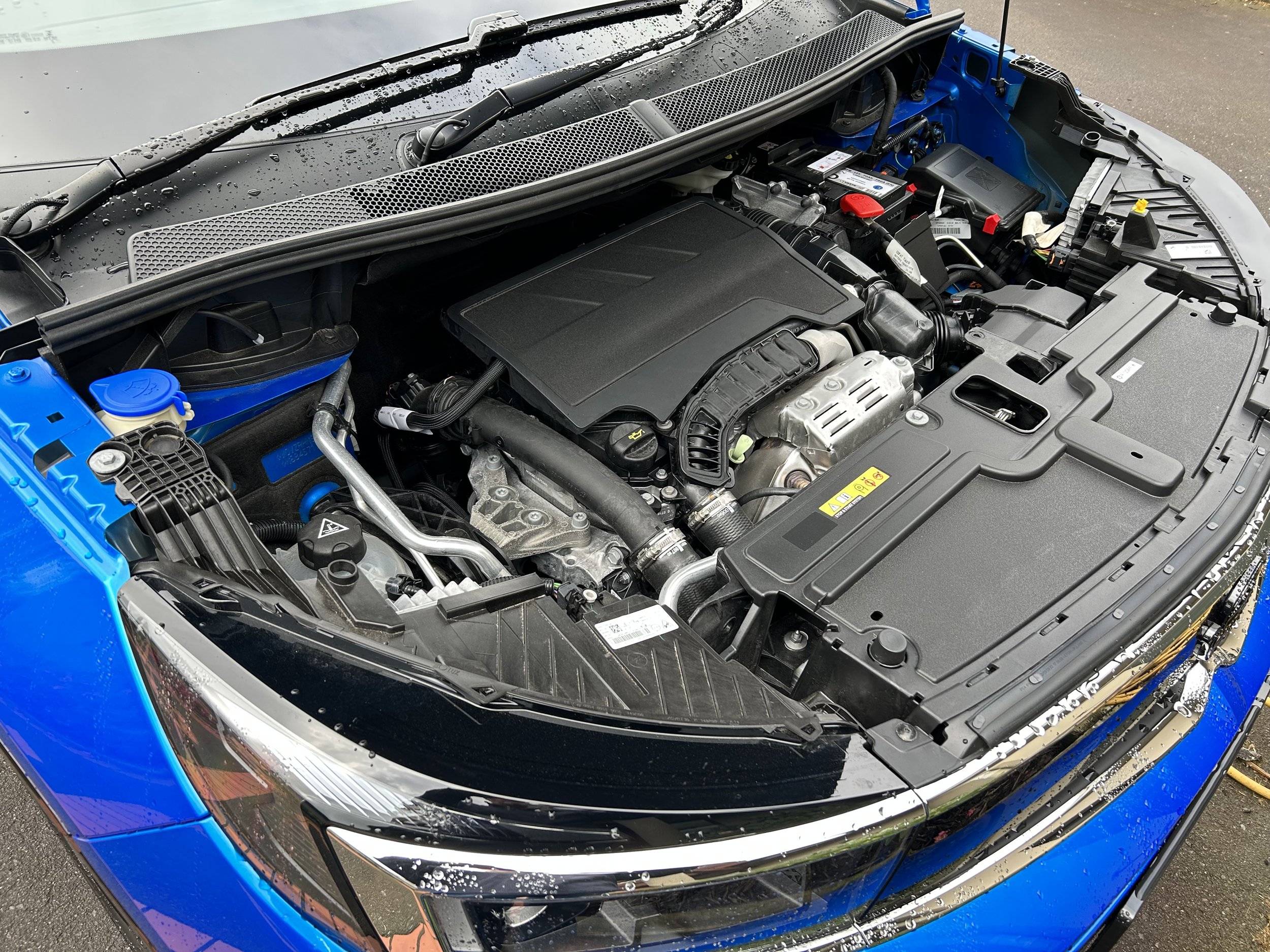Opel Grandland SRi roadtest review: General quarters crossover
/Even though it presents in latest corporate apparel, the newest Opel is reminiscent of product from a brand we used to know.
Price: $51,990.
Powertrain and economy: 1199cc turbocharged inline three-cylinder petrol, 96kW/230Nm; eight-speed automatic; front-wheel-drive, 5.4L/100km.
Vital statistics: 4477mm long, 1609mm high, 1856mm wide, 2675mm wheelbase, 18-inch wheels.
We like: Solid feel; usefully size; tight turning circle.
Not so much: Stop-start requires over-firm push; less excitement in the driving and handling than some offer; modernisation doesn’t roll back the years.
EXPLAINING the Grandland in a single sentence is a bit like resolving a Rubik’s Cube in a single twist.
Those with an eye for its detail will be able to tell it’s the first French-blooded Opel and the one that also maintains design link another brand much closer to home: Holden.
So let’s unravel this. Opel has since March of 2017 been an asset of Peugeot/Citroen owner PSA, When General Motors gave it up, the French had first dibs as they’d worked together on a special project. The compact five-seater crossover on test today.
Given how profitable it has become for PSA, it seems ironic to recall that, under GM, Opel was a loss-maker. To make a buck from the Grandland - or Grandland X as it was called then - they established s general engine-and-tech sharing deal with PSA. End result is that this car gained access to a Peugeot chassis and engines before any other current Opel.
Grandland X was signed off when GM without warning abdicated Europe; it went on sale after PSA bought the German franchise (and got Vauxhall as well) for a bargain $US2.3 billion. Soon after, PSA merged with Fiat-Chrysler.
So, in precis, the largest and last of the Opel models that is intended for sale here and is intended to rival to the likes of the Volkswagen Tiguan, Skoda Kodiaq, Nissan X-Trail and Toyota RAV4 was originally a GM project, made using PSA input, which then became a fully PSA car. Which is now made by the Stellantis conglomerate. Keeping up?
Anyway, as it has been in production since 2017, we’re seeing it late in life and another consequence of that is some familiarity with the Holdens were used to have.
That’s because back then Opel was also engaged to build Astras and the Insignia; which in our world was the ZB Commodore. Buttons and switches from the GM global parts bin that went into those cars, plus the Holdenised, but Chevrolet-provisioned, Acadia and Equinox are retained in the Grandland.
Grandland’s past history is more obvious within the cabin than at the kerbside, as two years ago it had a facelift in the truest sense; picking up the 'Vizor' nose that is a core design element all modern Opels.
It also sells with latest PSA powertrains; a plug-in hybrid 1.6-litre and a three-cylinder 1.2-litre forms, both married to an eight-speed automatic.
The PHEV gets a combined 165kW/360Nm from its drivetrain, which involves a 13.2kWh battery, while the fully SRi-badged petrol car on test here achieves 96kW/230Nm from a turbocharged 1.2-litre engine also shared with the Corsa small hatch and Mokka compact crossover.
But you can tell it has miles under its belt and arrival timing coincides with Opel having already decided it won’t clock too any more. A replacement, electric, car will succeed it in Europe from next year. Opel is going hard on banging out enough stock of what we see presently to keep NZ satisfied until perhaps 2025; how much familiarity is established in the interim comes down to market acceptance.
It’s a tough sector and, while the Grandland is right-sized and solidly-equipped, many rivals are newer cars. Opel recognises this. You will too when taking it for a drive.
That update was a big job, no argument; overseas’ contention about the facelift making it a smarter car than the 2017-born original seems valid. However, it being the only one that started out as a GM project, with PSA help, rather than a Opel designed under PSA direction has unavoidable consequence.
The big refresh within the cabin involves integrating digital displays screens; the new panel ahead of the driver is a big step up from the analogue dials GM designers likely thought would see it through. However, with PSA now having determined its all-digital 'Pure Panel' dashboard is standard to all other cars it makes, the Grandland simply couldn’t miss out.
It’s an intriguing implementation. Basically, the top half of the console is all new and very French, whereas the bottom half is pretty much left as it was previously, as is very obviously GM German. If you look up an image of the original layout you can see how the update has been effected, including how they’ve been forced to blank off an air vent on the driver side.
The screen displays are modern, but you wonder if the software driving it all is a bit a patch up; some aspects of the functionality seems less a bit make-do. At times, the computing power seems to be severely taxed. Giving it a sharper screen also only highlights the reversing camera’s poor quality; the view it lends is somewhat fuzzy.
Not being the latest and greatest doesn’t make it true worst idea, though. The GM developed plastics and seat design are a bit different, but overall cabin quality is generally very good, although you will find some cheap plastics without looking too far.
Opel persisting with old-school controls for the heating and air conditioning was probably also a value-driven decision, but in this instance it’s one to celebrate. Physical controls are much easier to involve with when on the move than on-screen prompts.
Speaking of physicality, Opel’s stop-start buttons require a firm and prolonged prod before they engage. It’s a faff that’s literally a pain, in whatever finger you use, on this one, as even more than the usual level of resolve seemed to be required. As it has keyless start, you’re using - and moaning about - it quite a bit.
In terms of storage, there's a lidded space under the armrest between the front seats, which is where you'll also find the wireless phone charger, if fitted, and there are spacious door bins. There's a small-ish lidded compartment ahead of the gear shifter, and another storage area in front of the armrest, which has a removable cupholder section. As well as the expected USB connectors, you also get a 12-volt socket.
Space in the back seats is good, although the centre rear seat is a little too narrow to be of much use for adults. There are three ISOFIX points though: two in the rear seat and a third in the front-passenger seat (which has an airbag cut-off switch).
The boot, at 500 litres, is a decent size (although in the PHEV that drops to 390 litres), and there's a flat loading floor. The floor height can be changed, the rear seats split-fold 60:40, and there's a central 'ski-hatch' for long, narrow items.
Here’s yet another Opel product that shows the 1.2-litre auto powertrain in great light.
You wouldn't necessarily think that a 1.2-litre engine could easily haul around a car as large as this, but actually the three-cylinder unit is up to the task, within reasonable expectation of the kind of buyer.
There’s no argument that a Mokka with this engine is perkier. The difference in 0-100kmh performance makes that clear; Grandland is slower, being barely about to break the 10 seconds mark.
In all probability, the engine has been set up with a greater bias towards efficiency than outright performance with Grandland, and rightly so: The appeal here is family functionality and low cost operability.
Even so, it has good around town zip and while you'd never describe it as fast on the open road, there’s enough mid-range oomph to make overtaking less wishful than you might think. Not unsurprisingly, given the capacity and cylinder count, it has a characterful soundtrack that become more obvious as the speed and revs rise. You have to work the eight-speed automatic a bit to keep it in the sweet spot, but all in all it’s not too bad.
As an aside, the Grandland's pedal box seems a little narrower than the Mokka’s; no too small to hold my size 12s, but enough to notice. the driving position is not too bad for a tall bloke, with lots of adjustment on both the driver’s seat and steering wheel. The same can’t be said of the rear visibility, due to the small rear window, flanked either side by a wide expanse of metalwork. When reversing into a park, you will rely heavily on the wing mirrors, which are good, the parking camera, which is less so, and the many sensors, which also do their job.
Fuel consumption ran in the mid-sixes and though officially it can get 5.4 litre per 100, the week’s result was decent, given where and how it was driven. The PHEV would be better in urban situations, but it adds $26k ($22k with Clean Car assist); that conceivably buys more fuel than the 1.2 might burn over three years of average ownership. If your imperatives are wholly driven by commonsense, the 1.2 will surely therefore seem fine.
In total dynamic feel, it’s not as flamboyant in driving attitude the PSA-directed fare; GM in that period preferred a more solid and stolid feel and, despite some retuning work on the springs and dampers, you can tell the new owner could only do so much. The ride quality lacks the fluidity of other Opels; you can tell straight away that bump-thump suppression isn’t of the same quality.
The steering is relatively quick and feels quite positive; give it a big bootful and front end grip degrades and you will also feel some torque steer, but it’s hardly wrist-aching. One reason why Opel withdrew the ‘X’ suffix was because it misled some intending buyers into thinking there was a four-wheel-drive ingredient. In reality, it’s always been a purely front-drive car.
Braking feel is a bit wooden, too, but it stops well and the driver assist systems are, in the main, all useful without being too overly-attentive. It’s no performance machine by is friendly enough and has reasonably good refinement, with tyre roar, even coarse surfaces, being competently contained.It's not particularly thrilling to drive, but it's a solid and sensible machine.
Opel's updates aside, it’s a generally well-equipped proposition, not least in safety terms. The SRi equipment level runs to extremely good matrix LED headlights, gloss black 19-inch alloys, Alcantara and leather-like seat trimmings.
Seat heaters, switchable lane positioning, AEB with cyclist and pedestrian detection, window tints, a heated wheel, Park Assist, wireless charging, a powered tailgate that opens and closes by gesture control and a five-year/100,000km warranty also involve.
The test car came in a striking cobalt blue with a black roof; the latter’s an appearance enhancement that adds $950 to the price.
It’s a solid pitch but it’s very obviously far from being the most modern choice in its category, nor the largest. Grandland is a compact medium crossover and shorter than many. Those elements will have prospective buyers giving careful consideration to what it is they are buying into, and for how much.
Some distributors are resolute about recommended retail stickers; others more flexible. AutoDistributors NZ clearly has enthusiasm for special pricing PSA stock when it senses slowing consumer interest. Grandland has already benefitted from that. Might factory-level incentives yet arrive as Opel clears the production line in Eisenach, Germany, ahead of a $174 million refit to prepare for the EV replacement? That could be just what it needs to truly stand out.





















